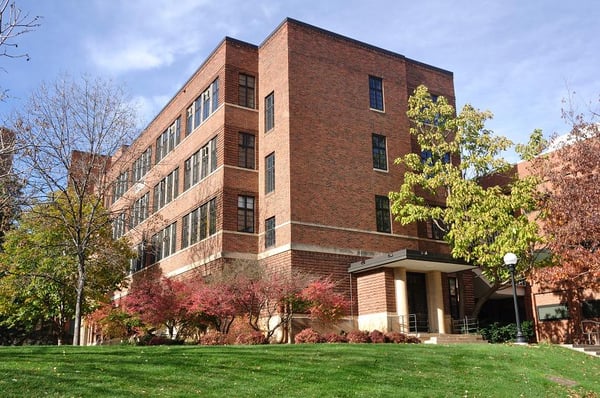Collaboration Key for Colleges and Universities in 10 Years

The following interview is with Holly Moore, the Executive Dean of South Seattle Community College’s Georgetown Campus and Darlene Miller, the Executive Director of the National Council for Workforce Education and former President of Manchester Community College. Moore and Miller both have significant background in community college administration and, in this interview, discuss the different missions colleges and universities serve, and how these different institutions will need to work together in 50 years’ time in order to be successful.
1. What are some of the characteristics of today’s traditional community college that separates it from the average four-year university?
Holly Moore: Well, obviously, one of the major things that I see as a difference is a focus on applied learning and skills training that leads to direct employment. The comprehensive community college mission includes workforce education and, in that vein, we are committed to finding people and connecting people with employment. That is the biggest difference, as I see it.
Darlene Miller: To follow up on that, I think one of the other big differences is our flexibility. Community colleges are so much more flexible and so much more responsive to business and industry, particularly in our technical areas and our technical training areas. And we do an awful lot of programs on the non-credit side of the house that lead to industry certifications that don’t happen at the universities. We’ve been working very hard over the last couple of years to make those linkages between the non-credit programs and the credit programs, so that when people earn an industry certification, it has value in the educational institution. I think the other difference is that we do have a mission and we take very seriously our mission of serving low-skilled adults and really trying to help low-skilled adults get access to education and training they need to go to work and to achieve family-sustaining jobs and careers.
HM: I think that Darlene is exactly right on about the training low-skilled folks for jobs. The focus we have, I think that universities don’t have, is that we contextualize. We link those basic skills to a work environment, to a pathway. … We’re creating pathways that incorporate both the basic skills that an individual may be missing, along with the technical and work skills that are required in the job.
2. How will colleges 50 years down the line act on these traits? Do you think they are going to focus specifically on those traits or will they just be a part of a regular service agenda?
DM: I think that what’s interesting and is going to be interesting in the future in higher education — and I think community colleges will be the first to be able to respond to it, and I think we do — is that people aren’t necessarily going to be coming to college and universities to sit in a classroom for four years to get a degree. They’re going to be coming to get skills training to get a job, and then coming back again to get more training to get a job.
I think we’re going to start to see a loss of interest [in traditional degrees] … and I think employers are moving in that direction as well. It’s less of an interest in what you have on a piece of paper that you earn from somewhere, as opposed to what you can do, and what are your competencies and your skills? And so I think we’re going to see a difference, and I think we do see that already in the community colleges, because we do so much in terms of short-term training and short-term certificates. [The trend will be] that people come… [and get the education or training that] they need to get a job, they might come back and [get more training to] get the next job, and they move up the career ladder. And I think that’s going to be the change that we’re going to see over the next 10 years.
HM: Two things come to mind immediately. Tagging on to what Darlene said, that it’s stopping in and out in the educational system, that we’re seeing happen now in the higher education system that we’re seeing now, I think that in the future you will see us be able to create baccalaureate degrees and associate of arts degrees and advanced degrees based on stacking these kinds of things together and creating a degree package. Not necessarily all from the same institution; in fact, likely not all from the same institution and maybe not even all in the exact same, traditional way we look at disciplines.
The other thing I think that’s going to change in the future is one of the things that we see that’s happening right now. As we look at the high school graduating demographic, we’re seeing it plateau and eventually decrease. So our efforts to create education around that kid that graduates from high school and goes to a college and lives in the dorm and goes straight through to the baccalaureate is few and far between and going to get less. So we have to — both colleges and universities — will have to modify their practices to attract, retain and educate an adult population that is working, that may be mature, over 45, that have been in and out of school, maybe have never been in school, and even a huge demographic of folks that don’t have high school education. And we are going to have to learn how we, in higher education, can accommodate and successfully serve these students.
That’s going to be a challenge, but that is the future.
3. Do you see the community colleges in the future, at a first level, awarding bachelor’s degrees as they currently are in Michigan and, at another level, do you see them working together with universities to develop joint degree programs that will provide students with workforce skill and with that liberal arts education that comes from the university?
DM: That’s a really difficult question to answer because we’ve been trying to do it for a very long time with not a lot of success.
And I think that’s why you see in many states … community colleges are offering baccalaureate degrees in applied areas because the university does not … have [right faculty] or the facilities to do a lot in those applied baccalaureate areas. So I think that you’re starting to see it happen, you’re seeing it happen in Florida, it’s happening in Michigan, it’s happened in Washington a long time ago, Minnesota, Arizona; all these places are allowing community colleges to do applied baccalaureate degrees because the universities really don’t have the capacity and, often times, the right faculty to be doing this type of work [and it is not part of their mission] … I truly believe that in the next 10, maybe 15, years, that a degree is not going to be as important for employers as having something that certifies competency and skill.
HM: I agree with the certifying competency and skill. Right now I’m working with about 50 manufacturing companies across the board — diversified manufacturing companies. And … they represent everything from [pharmaceutical] device manufacturing to maritime to aerospace. And one of the things that they have said to us is… they want people to come out with these competencies, with the credentials that indicate their competencies. But the other part that they want in there is a level of mastery. There’s a difference between being exposed to a quadrant-measuring machine as opposed to being able to utilize that with a sophistication that an employer needs to get the job done. And, so, they’re asking for not just the competencies, but a level of mastery.
And I think we’re going to have to see ourselves as educators in the future — not just giving a test or asking for a student to turn in a paper and get a grade and then move on to another subject — but, rather, that students are exposed to the material long enough that they reach a proficiency level that is something that we can respond to with employers.
4. … How does that play into how colleges are going to be competing against universities in 10 years’ time? Will it be on the basis of providing those workforce skills and mastery of particular skills that are needed to succeed in particular industries? Or is there another area where you see colleges dominating the market or differentiating themselves from four-year universities?
HM: … I hope that in the future we’ll be collaborative rather than competitive. So, I think that both of our systems will change to support each other in different ways. I don’t believe what you talked about earlier — the idea that one does the technical skills and the other does the breadth or general education skills — we used to call those upside-down degrees. And we did a lot of them back in the 70s and 80s, I think. But I don’t think those have been as successful and so I really don’t think you’re going to see a lot of that. But I do think that there’s going to be other ways for us to collaborate. One of those will be the way that we as community colleges can bring employers to the table, and I think that’s our niche.
DM: I really hope that, as this future evolves in terms of the way people are going to access education, and need education, that it becomes a more collaborative model and we work better together. …
One of the things that needs to happen, if we’re going to really meet the future of the completion agenda, is that universities can’t take community college students before they finish their associate’s degree. … You complete the associate’s degree and then you move to the university. So, there needs to be this partnership, because we can’t have students not completing anything anywhere. It needs to be more in collaboration. …
5. Is there anything that either of you would like to add about community colleges 10 years into the future and their differentiation points from the four-year universities?
HM: The one thing I would add that we just touched upon a little bit is this whole concept of applied learning. While it’s not a new concept, it is one of those areas that distinguish us from four-year universities because, in the university system, they do applied learning when it reaches the master’s and doctorate level, in medicine and in almost every aspect at the graduate level; we do applied learning from the undergraduate level. I think that is a distinction between us, but it is one of the things that might in the future bring us closer together.
DM: I agree. I think that we have a lot to learn from each other and we are different — sometimes in the populations we serve — but I think we need to [work together collaboratively to ensure that the needs of all learners are met]. …
My background is in engineering. People say that for every engineer they hire, they need six technicians to support the work of the engineer. So, there needs to be this partnership between the universities and the community colleges where there are degrees that the university will produce but then there are people that are going to support the work of those individuals that are going to come from the community colleges.
I don’t think I want to ever think about us competing. We are different in what we do, but both of our missions are important. We always need to be good partners with each other because, the reality is, what our end goal in all of this is, is to help people get the education and training they need to get a job, get a better job, get the next job, create economic [viability], create talents in our communities because our communities can’t become economically stable without good talent in the community and it’s something we have to do together.
HM: And, certainly, education and economic viability are essentially linked for the future of at least this country.
Author Perspective: Administrator
Author Perspective: Association



